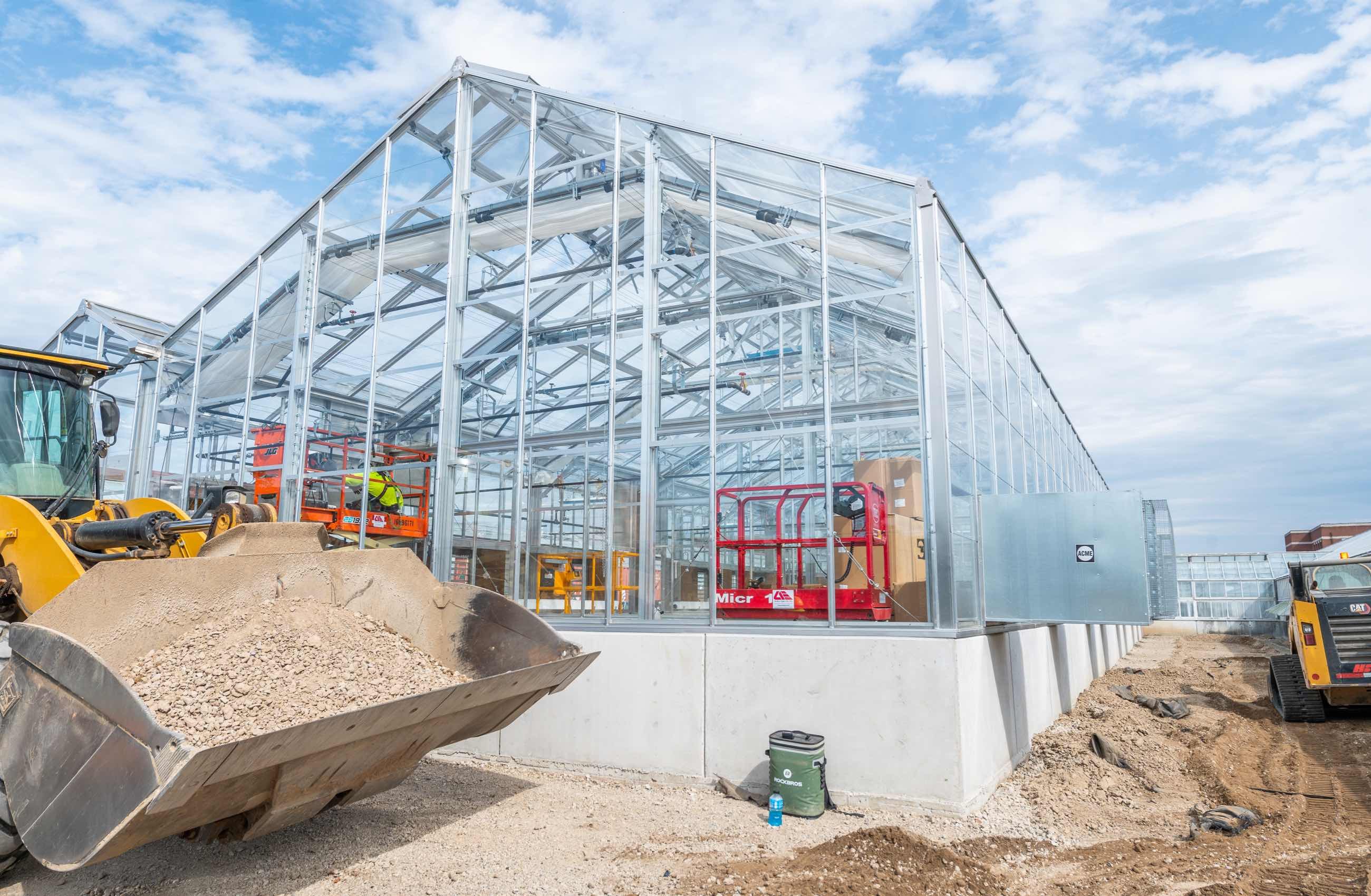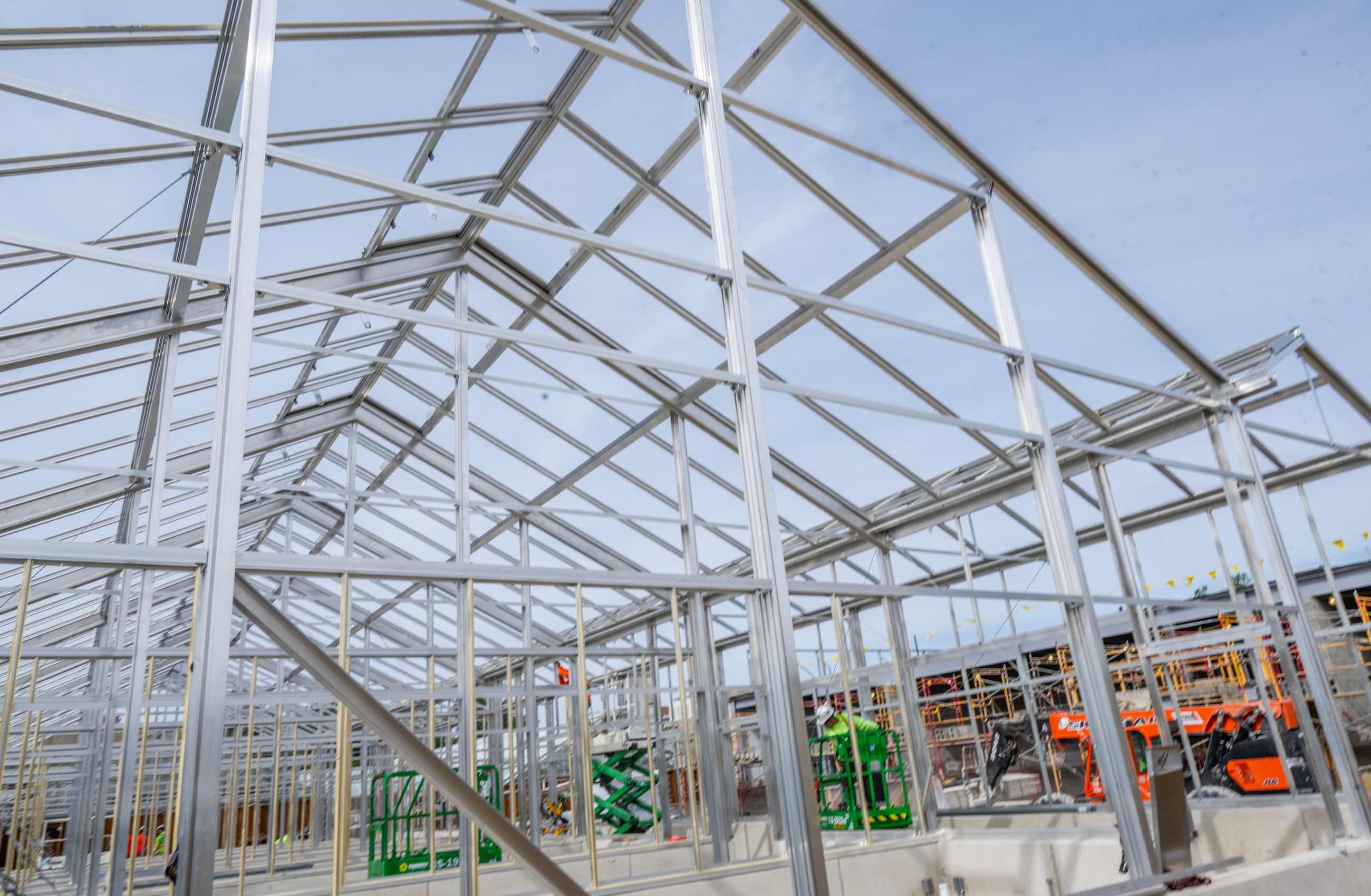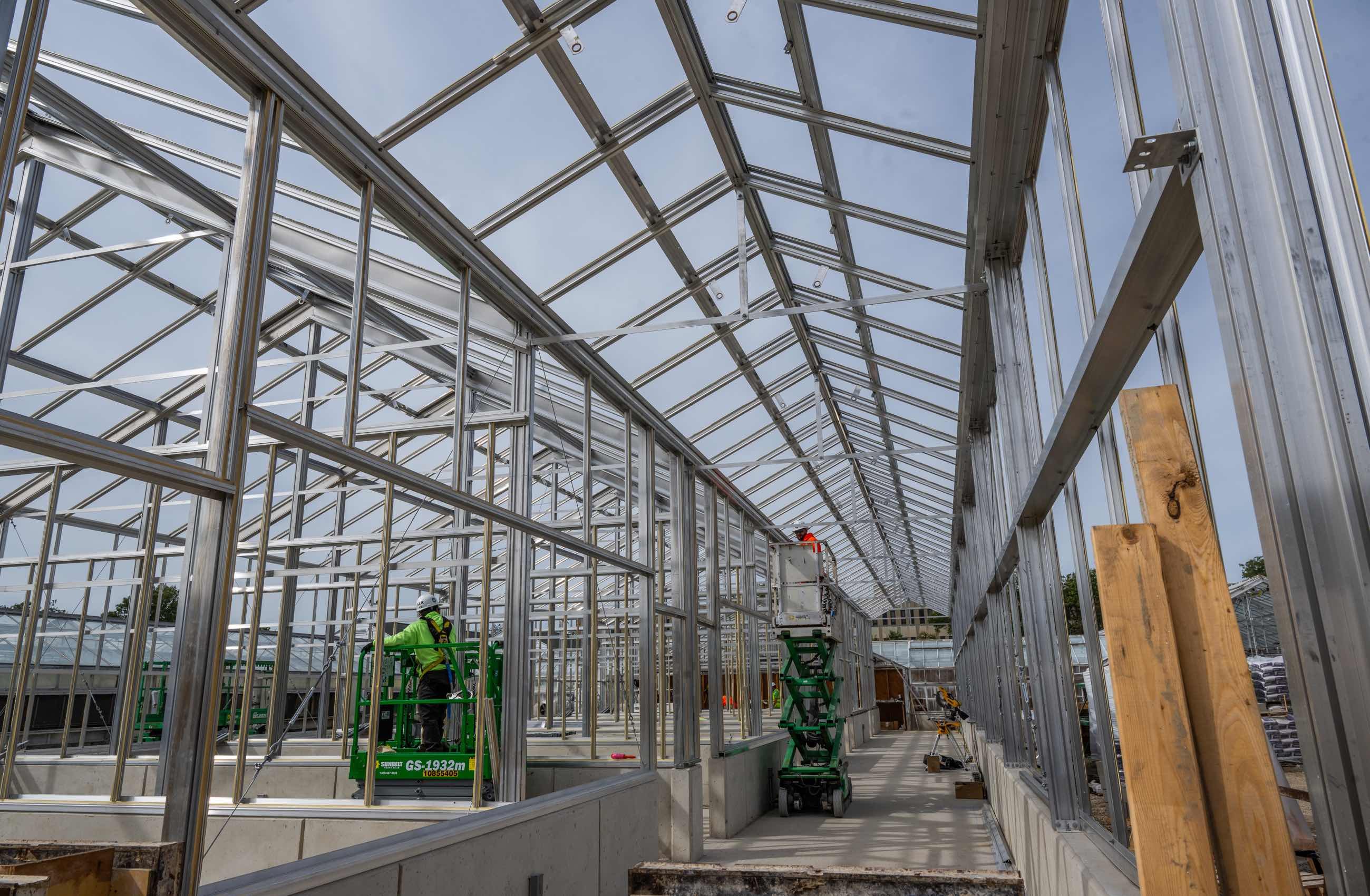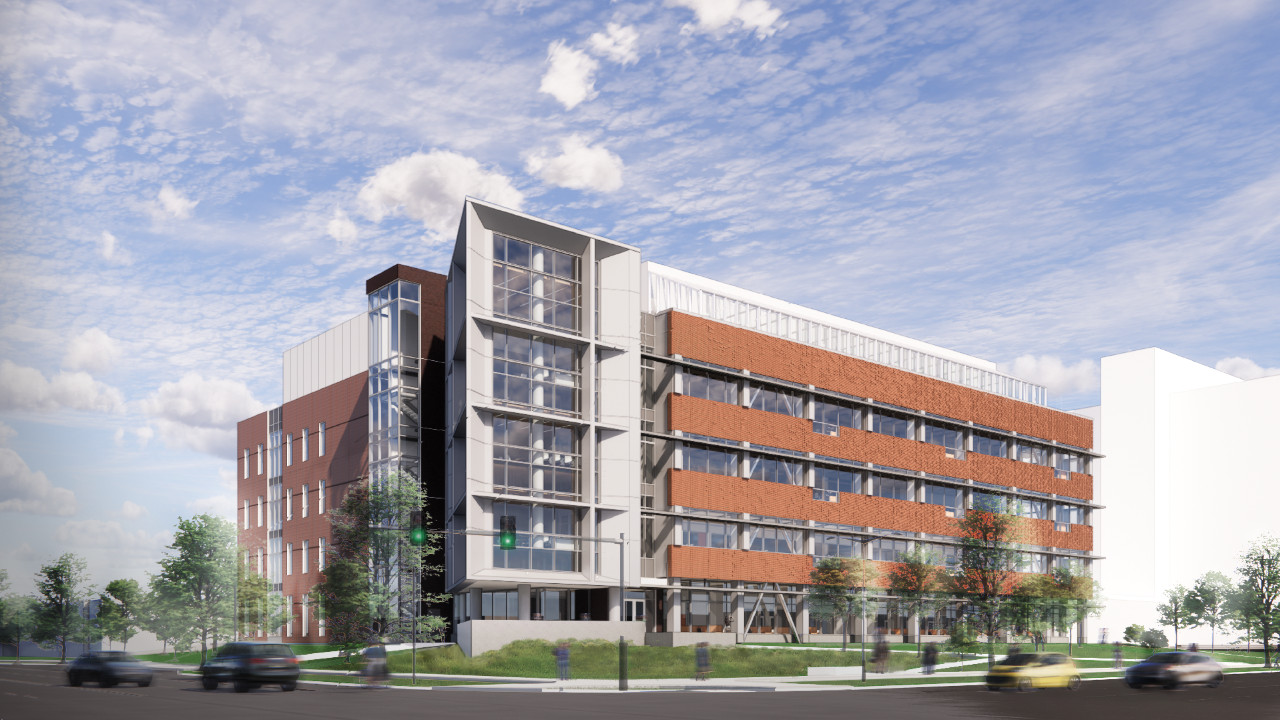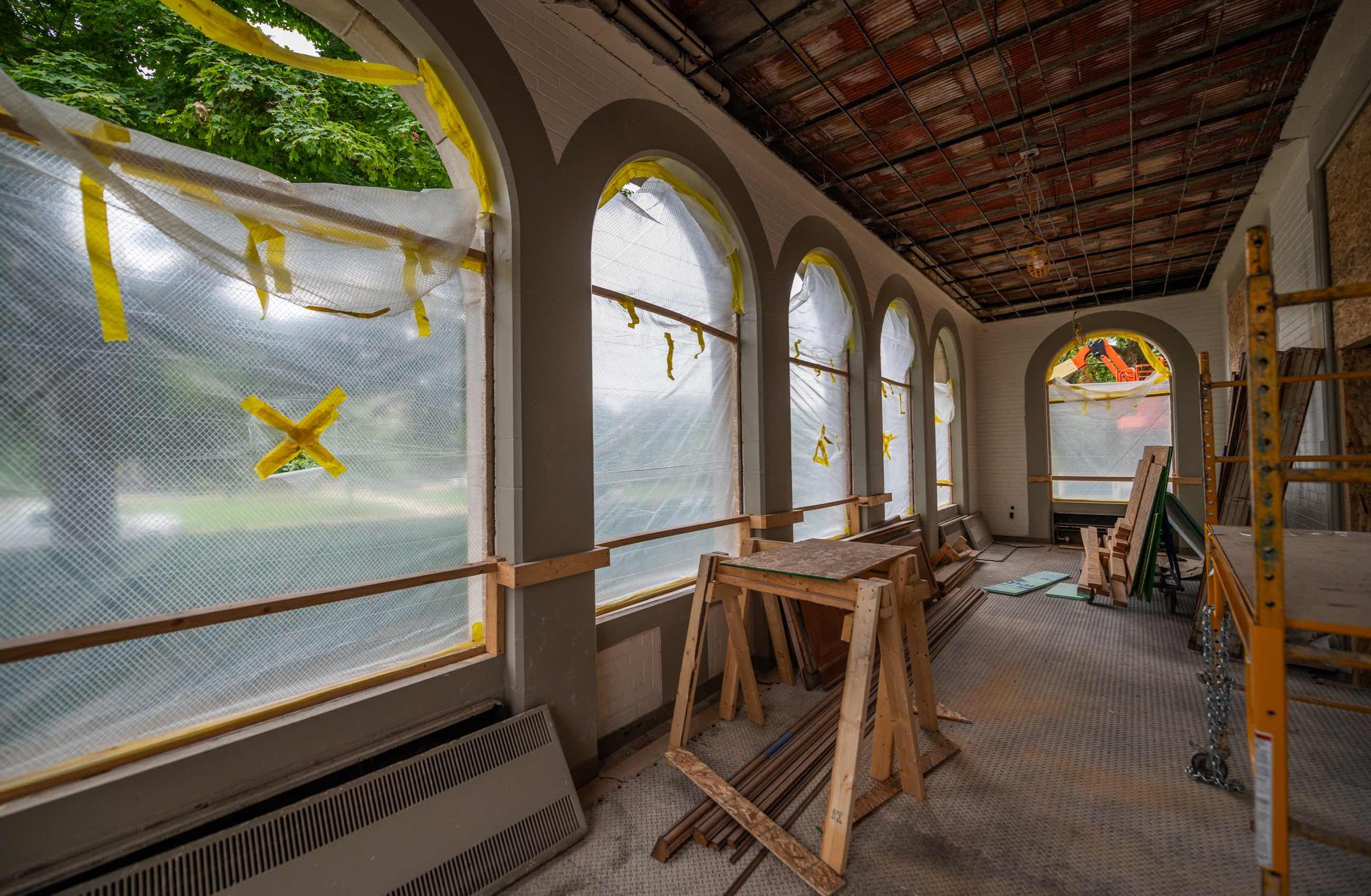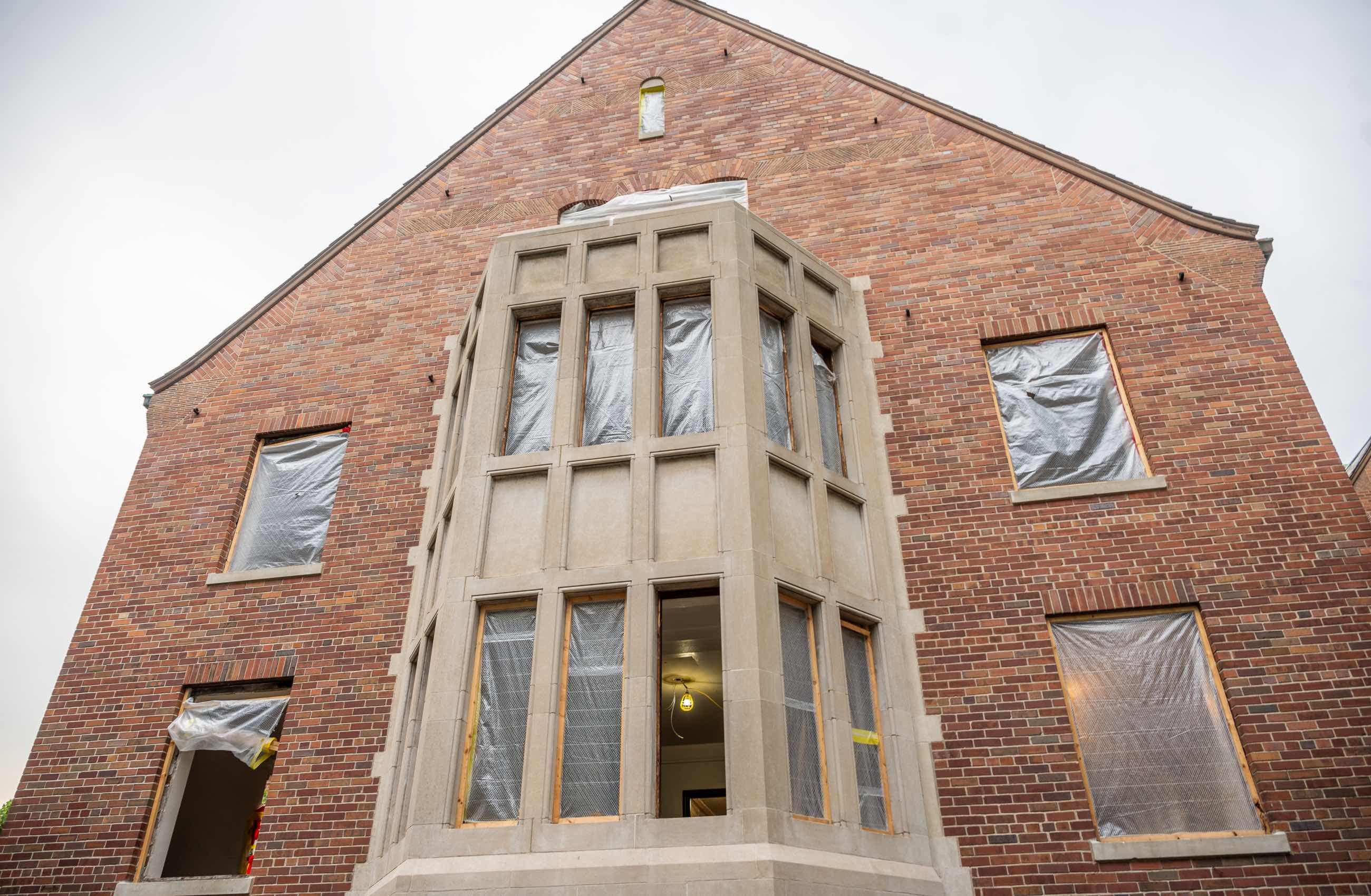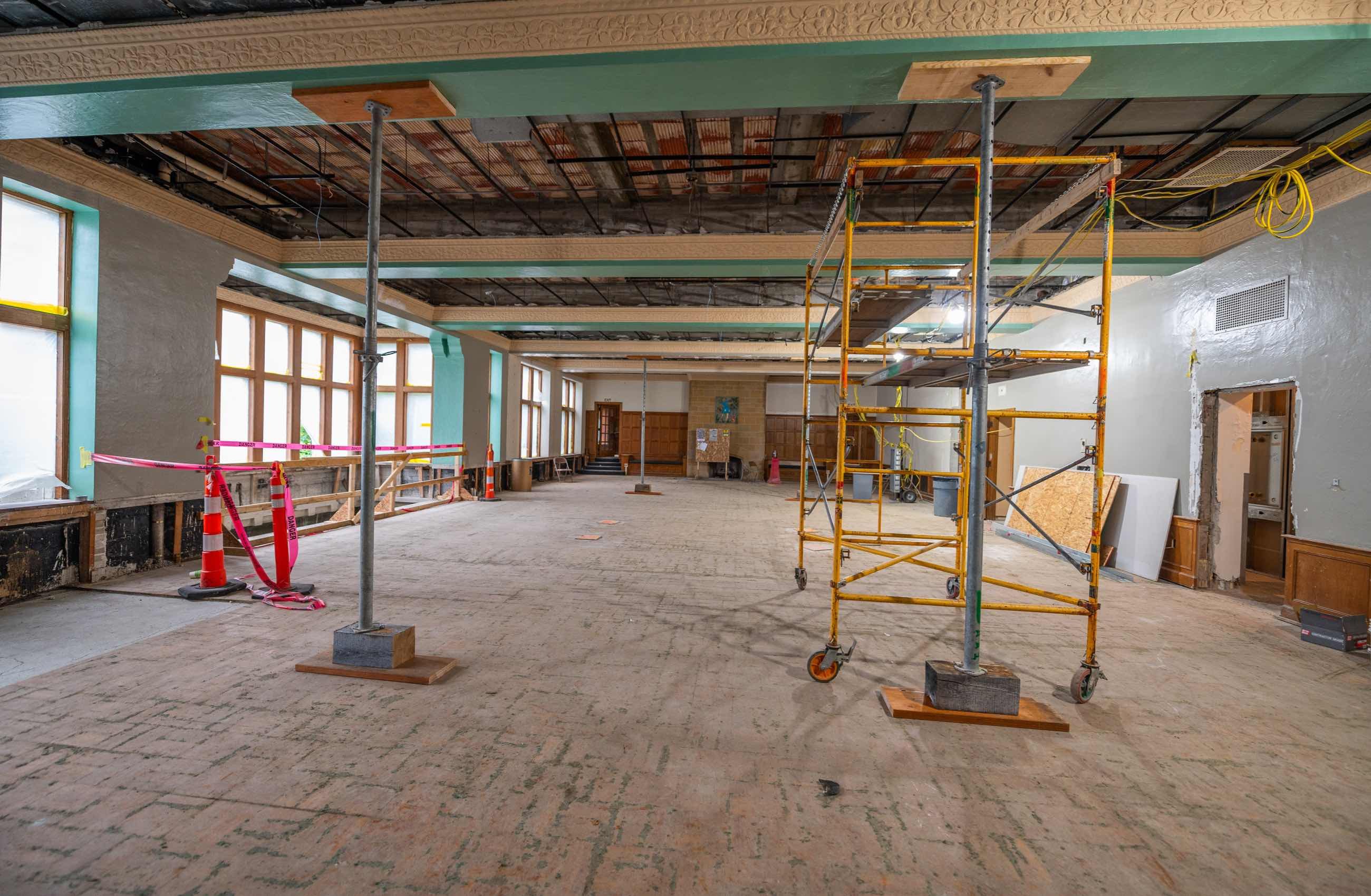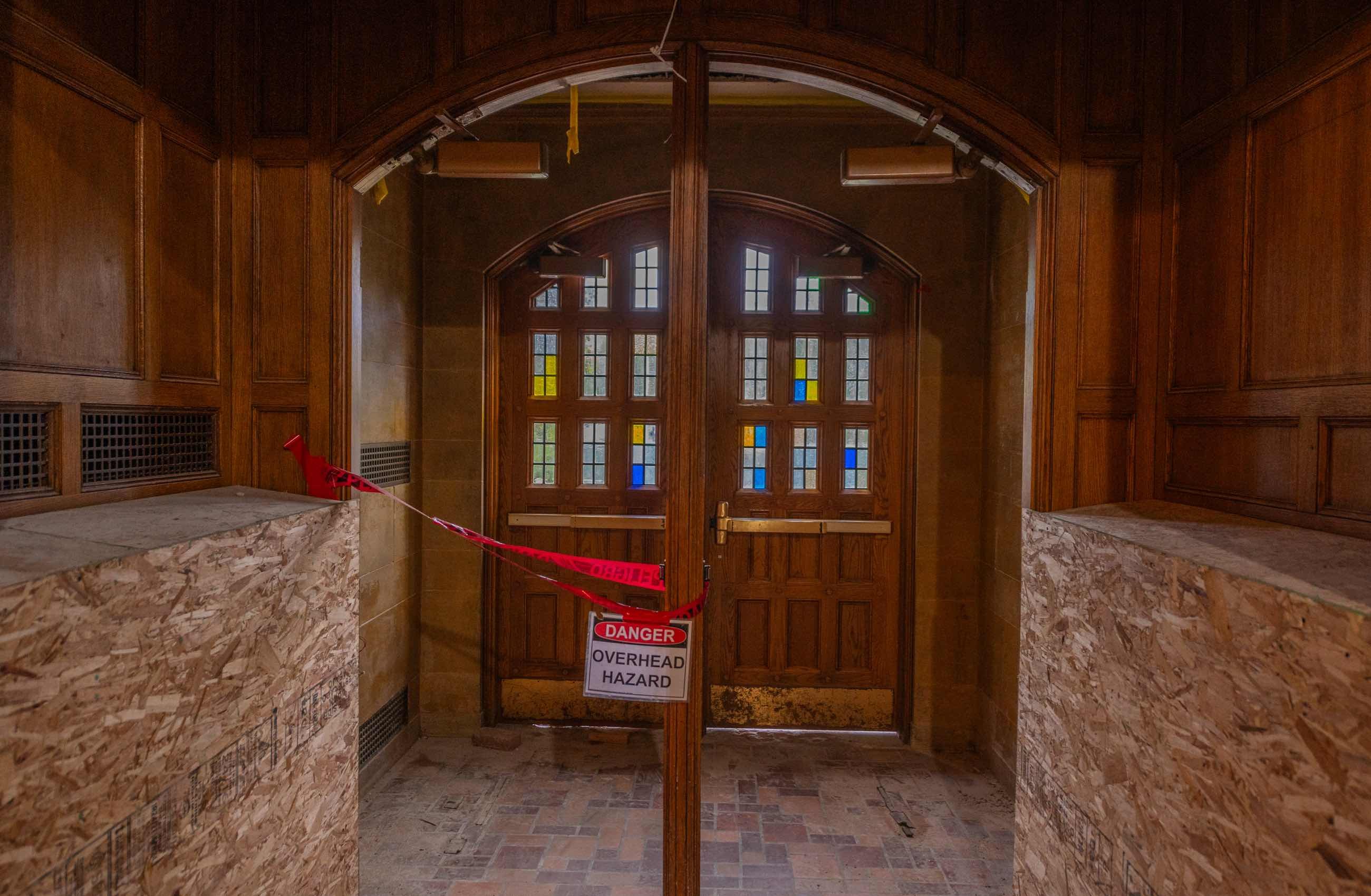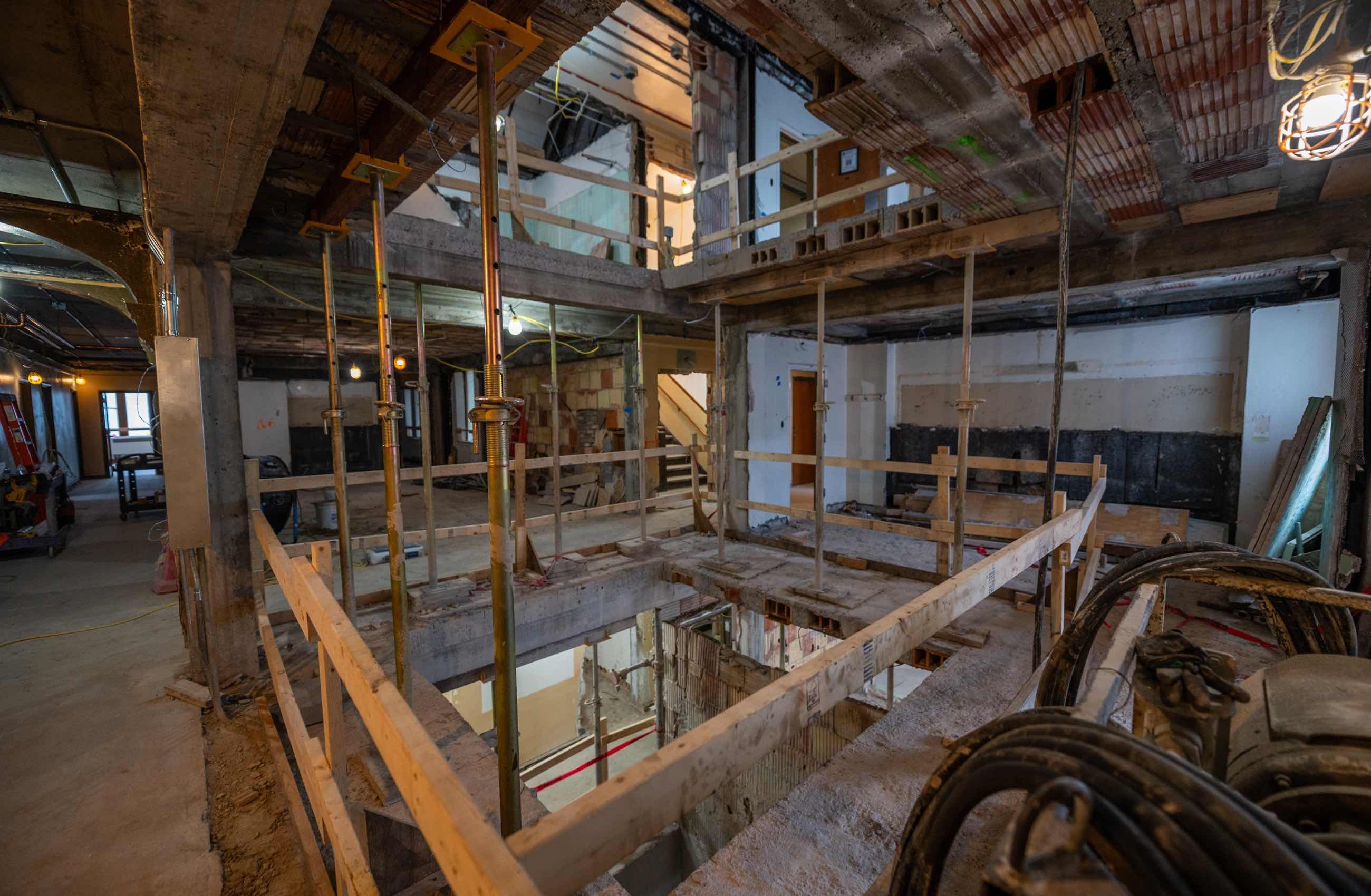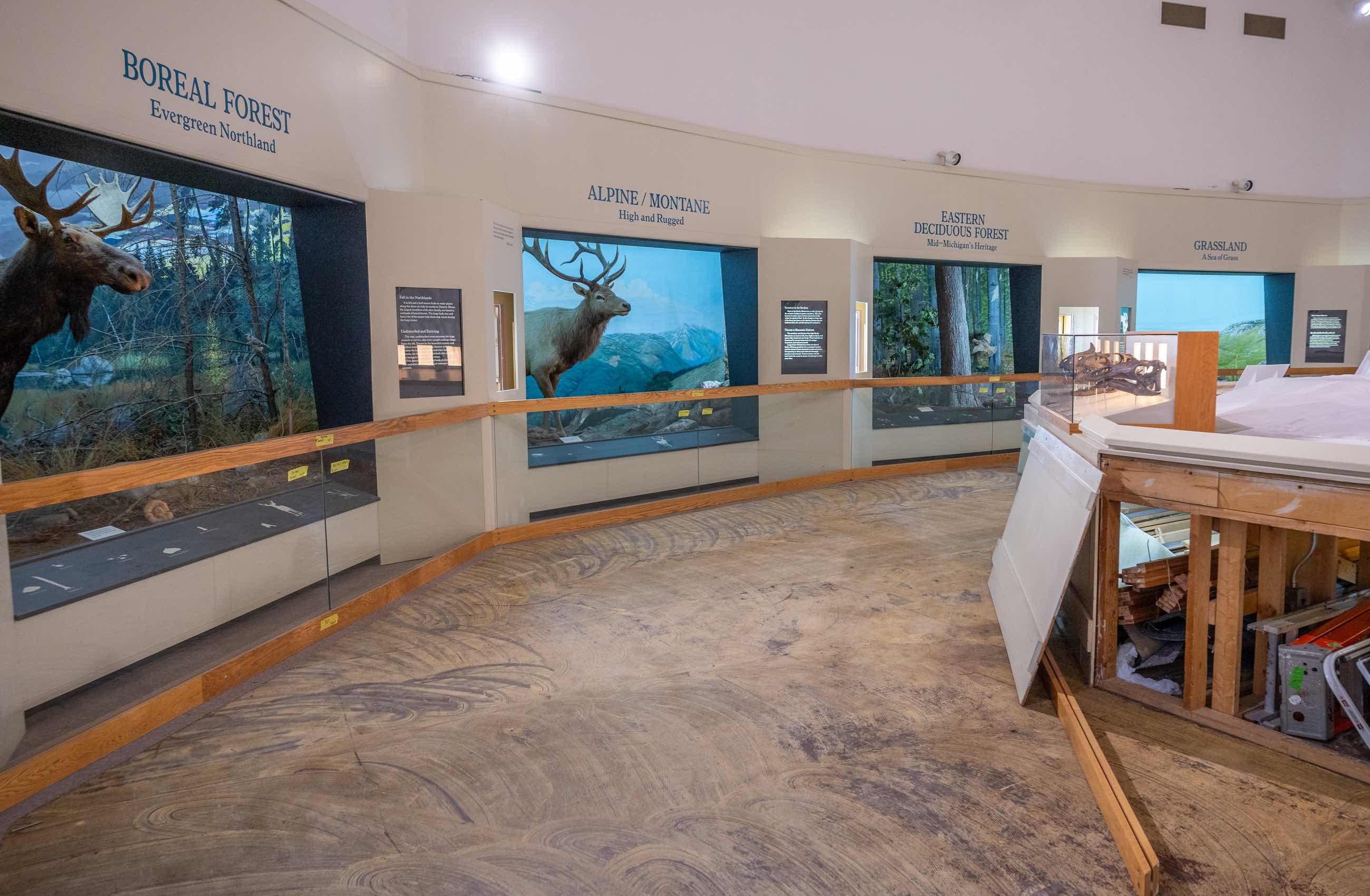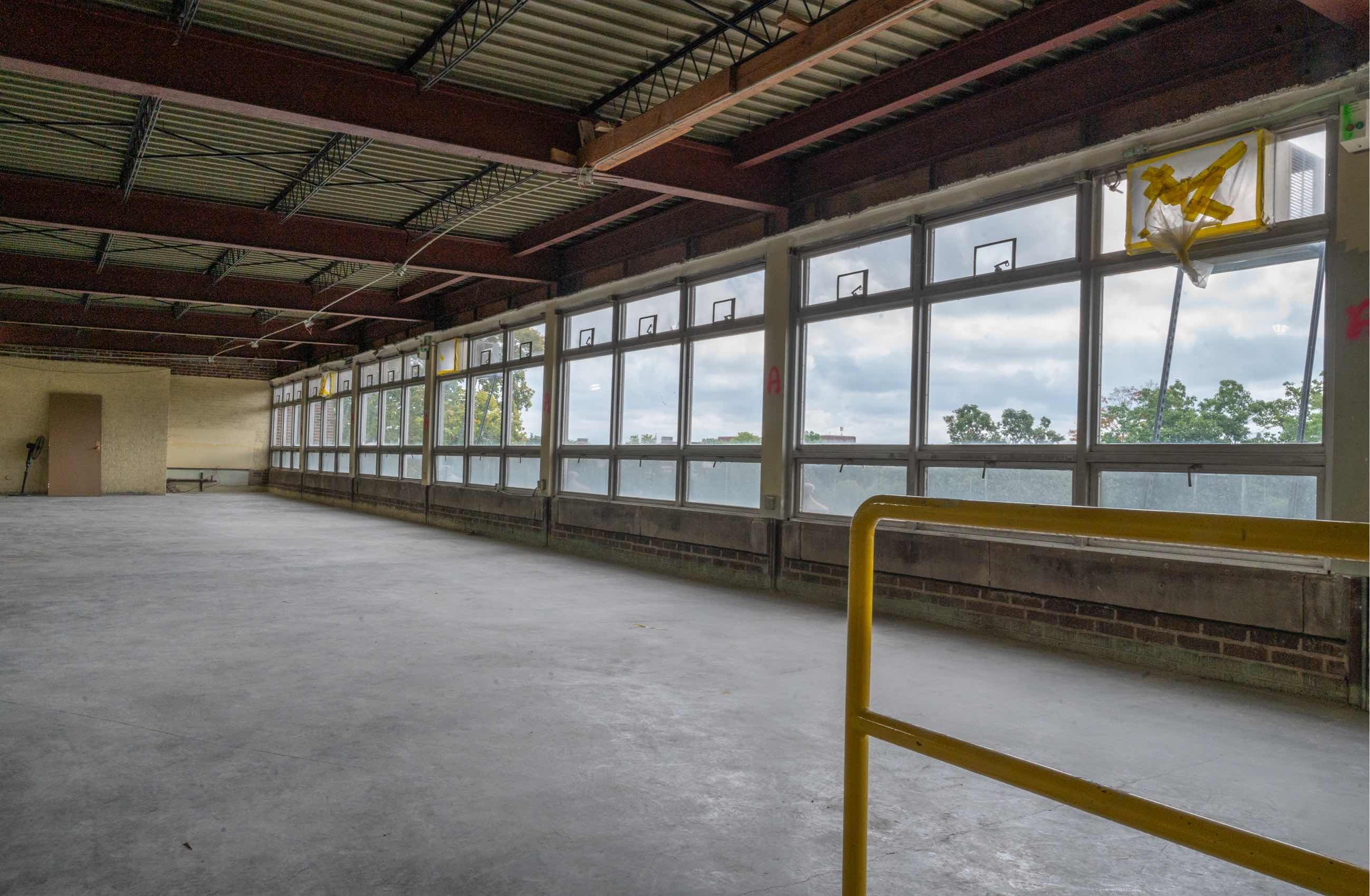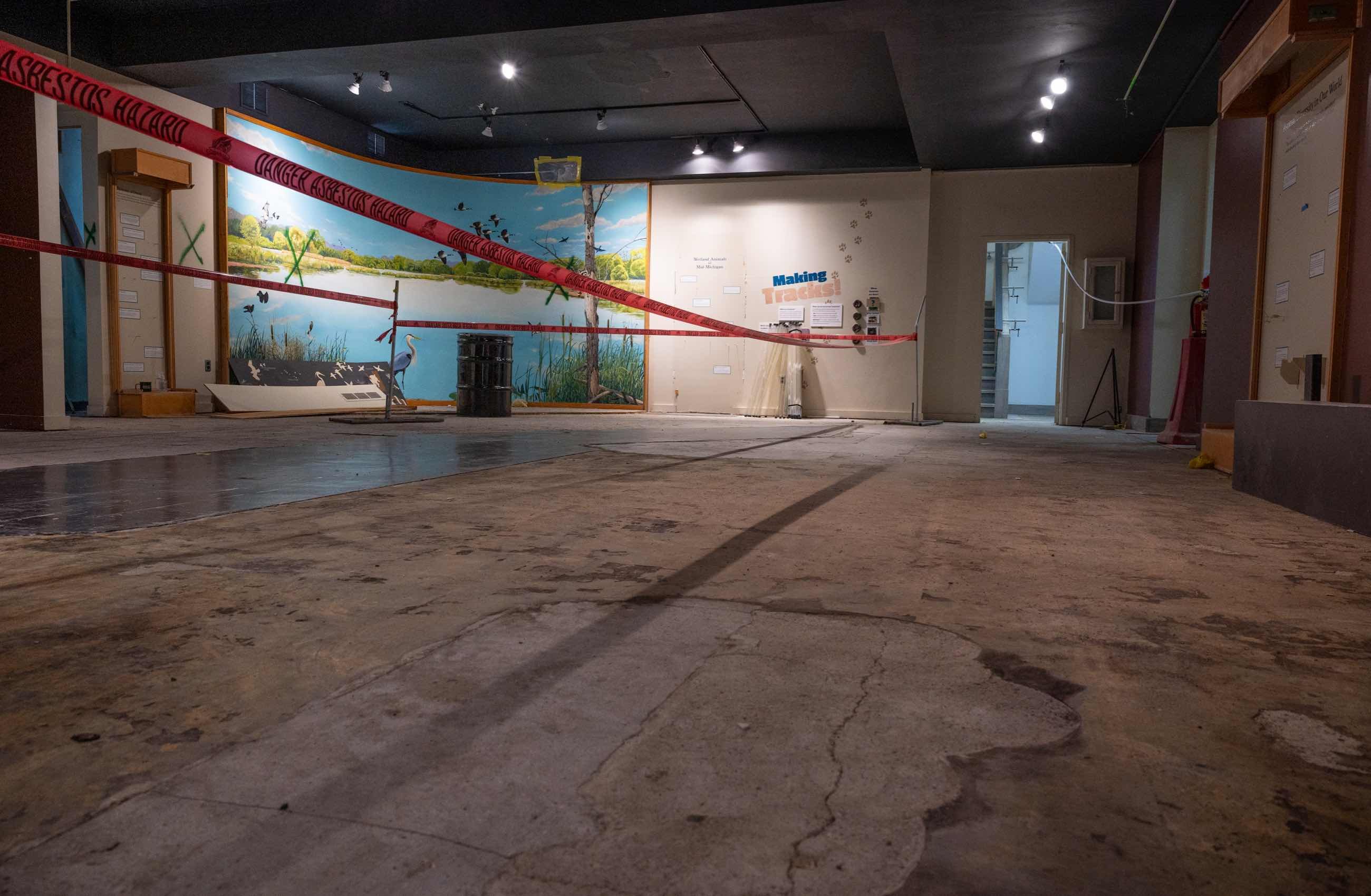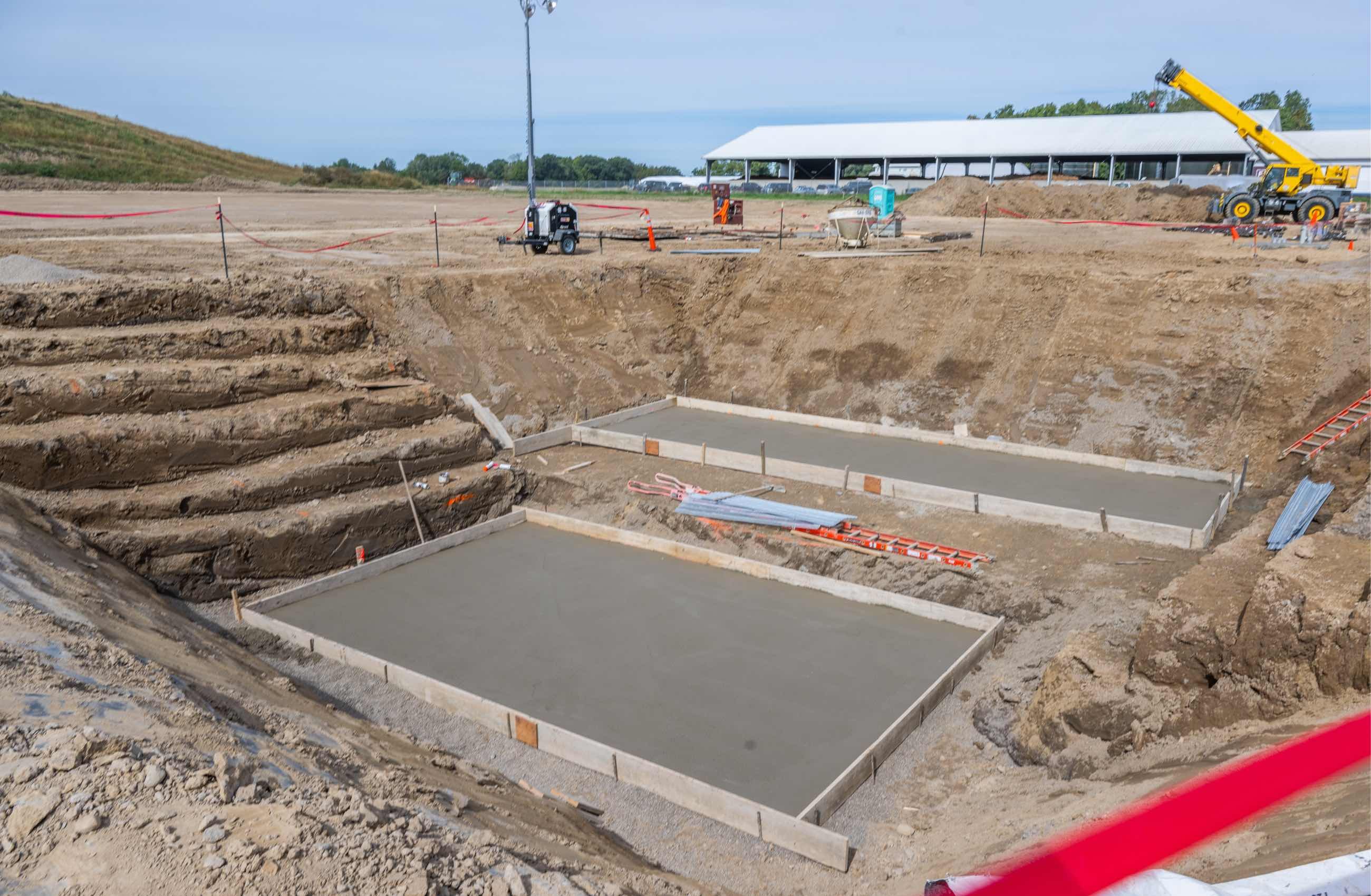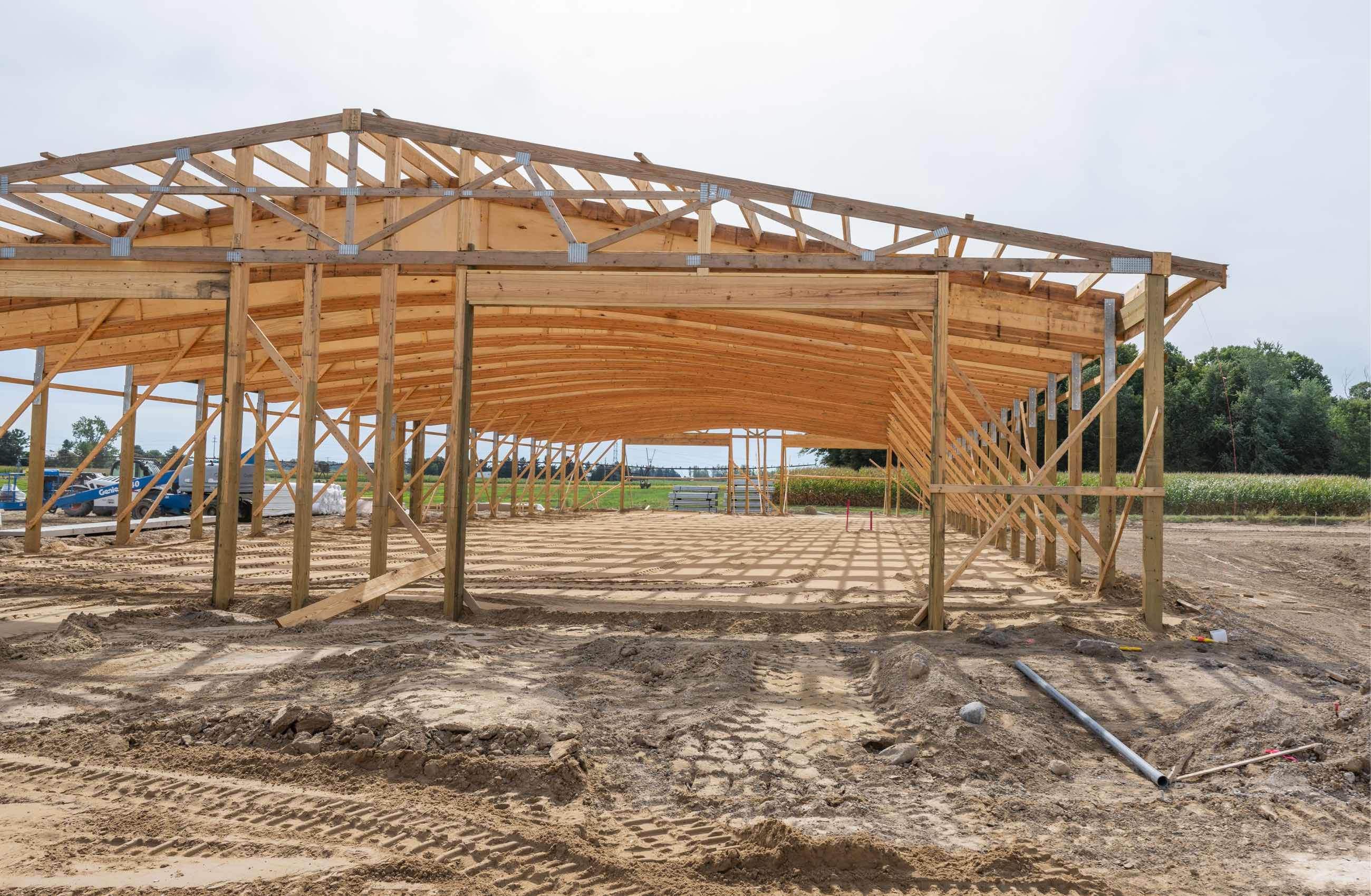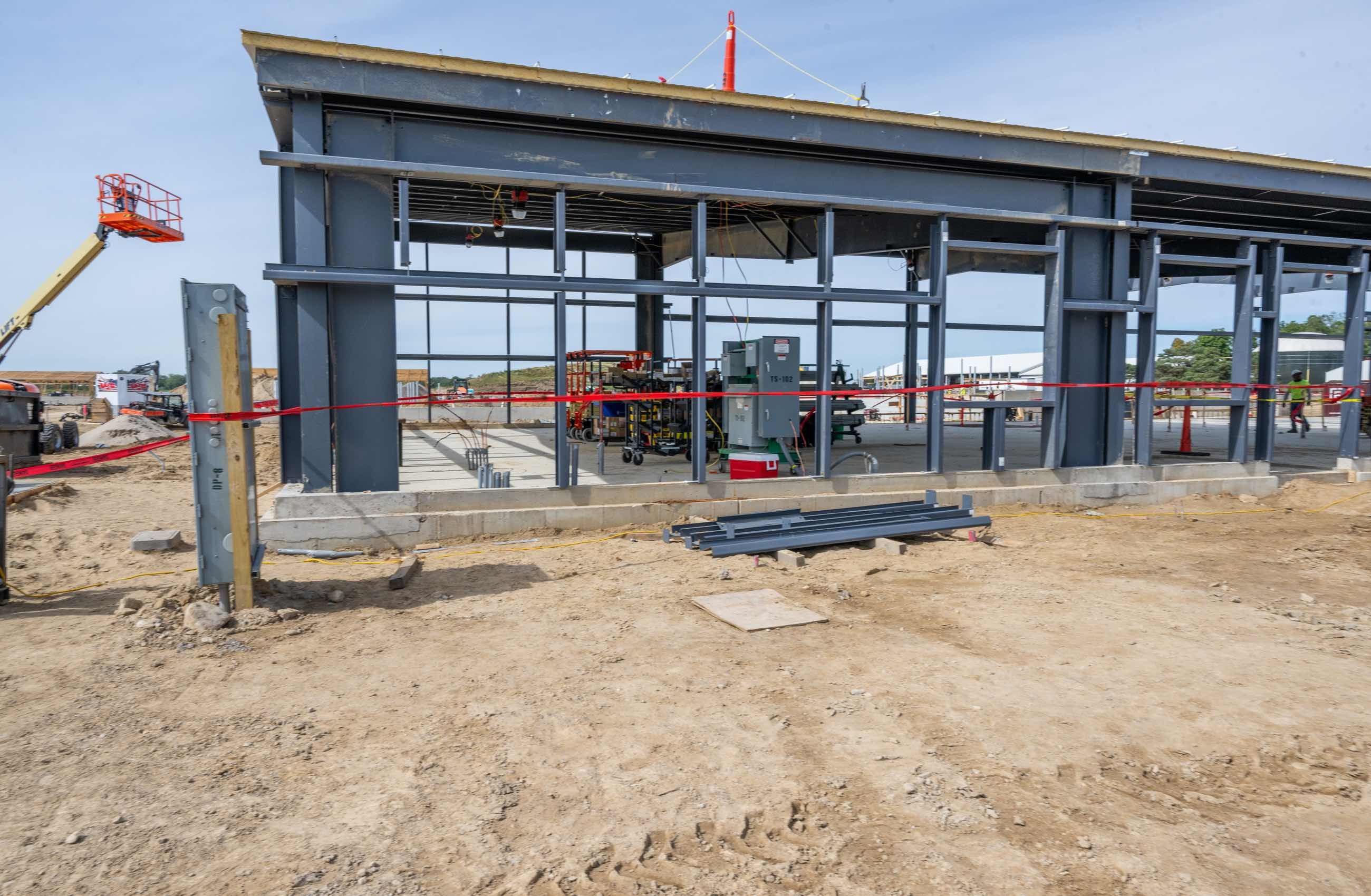Notice
This website is undergoing a refresh. Please pardon some errors while we complete this process.
Building space for innovation at MSU
Construction investments across the university expand opportunities for students, faculty and staff while preserving the unique landscape Spartans call home

Plant Science Greenhouses
A familiar sight near Farm Lane and Wilson Road, MSU’s Plant Science Greenhouses look pretty good for being nearly 70 years old, but there is a lot of room for improvement. Current renovations and additions will include the latest environmental controls and energy-efficient LED lighting configured to external climate conditions. The project also includes a new headhouse, which will provide administrative and research space.
Plant Science Greenhouses are a research and teaching hub for 70 faculty and 600 students in the colleges of Agriculture and Natural Resources and Natural Science. Improved facilities are critical to recruiting and retaining top faculty and students as well as expanding research and funding opportunities.
In addition, the greenhouses are an important part of MSU’s participation in the Great Lakes Bioenergy Research Center. Established in 2007 by the U.S. Department of Energy, the center focuses on three areas of research: sustainable cropping systems, efficient biomass conversion and field-to-product integration.
Campbell Hall
Named after influential MSU faculty member Louise Hathaway Campbell, who served as dean of MSU’s Women’s Program, Campbell Hall first opened to students in 1939. More than 270 students call it home each academic year, many who carry fond memories of momentous occasions.
With the continuing support of numerous donors, the renovation will enhance residence hall safety and accessibility features and correct building deficiencies as well as improve student spaces for gathering, community-building and studying — all while preserving the historic character of north campus.
In addition, Campbell Hall will become the first dedicated residence hall for the MSU Honors College. Currently, honors housing is available on floors in eight residence halls across campus. This reimagined space will serve as a residence hall for 300 honors students and provide resources for the entire Honors College community.
"The renovated Campbell Hall will ignite opportunities for our students — enhancing transformative research, fostering community and driving academic excellence," says Glenn Chambers, interim dean of the Honors College. "It’s another milestone in establishing the Honors College as a premier destination for undergraduate research.”
MSU consistently ranks as one of the top public institutions by U.S. News & World Report for its undergraduate living and learning communities.
MSU Museum
The closed notice and construction fencing are the only outside indication of work at the MSU Museum. In fact, when the museum reopens near the end of 2025, the inside may not look all that different either. But behind those walls will be a whole new world.
The 18-month renovation project will implement state-of-the-art climate control systems. Beyond creating a sustainable and comfortable environment for visitors, the upgrades help the nearly 160-year-old building align with industry standards for collections stewardship, storage and exhibition. In addition, the museum will receive accessibility enhancements and the construction of two new spaces — an Immersive Lab and an Exhibit Lab.
“As we embark on this transformative journey, we are not simply renovating a building — we are reimagining the possibilities of how a museum can serve its communities,” says MSU Museum Director Devon Akmon. “These upgrades will enable us to better care for our collections, provide more accessible and immersive experiences and ensure the MSU Museum remains a place where education, innovation and inspiration thrive for generations to come.”
Dairy Cattle Teaching and Research Center
The average visitor to the East Lansing campus may not be familiar with the MSU Dairy Cattle Teaching and Research Center. But for students and faculty in the colleges of Agriculture and Natural Resources and Veterinary Medicine, the center provides vital education and research opportunities.
With $30 million in support from the state of Michigan, a new facility will expand capacity by increasing herd size by 430 cattle. In addition, the project will modernize barns, feed centers, milking parlors and laboratories. The new facility also will provide enhanced spaces for student instruction.
“We’re watching the new Dairy Cattle Teaching and Research Center take shape before our eyes,” says Matthew Daum, interim dean of the College of Agriculture and Natural Resources. “From tripling the herd size to building a biosecurity-friendly visitor center to equipping our scientists with modern on-site research stations, this facility reflects our faculty and staff members’ ambitious vision for a sustainable, profitable dairy industry.”
The Michigan dairy industry ranks first among state agricultural commodities, generating $24 billion annually, supporting over 110,000 jobs, and accounting for nearly 5% of the state’s gross domestic product. MSU supports the industry through research, teaching and learning, outreach and engagement, and training of the next generation of dairy farm employees, managers, consultants, nutritionists, veterinary professionals, clinicians and veterinary technicians.
Farm Lane Bridge
The newly renovated and constructed Farm Lane Bridge opened to traffic in mid-August after nearly 16 months of work.
Henry Ford Health + Michigan State University Health Sciences Research Center
Check out the photo gallery from the groundbreaking of the Henry Ford Health + MSU Health Sciences Research Center in the Detroit New Center neighborhood. It will be MSU’s largest research facility to date, designed to accommodate more than 150 researchers, and will expand discovery in areas including cancer, neuroscience, immunology and public health.
The research center will have dedicated space for MSU and Henry Ford Health researchers, as well as one floor devoted to the Nick Gilbert Neurofibromatosis Research Institute. This will be the first brick-and-mortar institute solely dedicated to neurofibromatosis, bringing unique opportunities for collaboration across the partnership and with researchers around the world.

